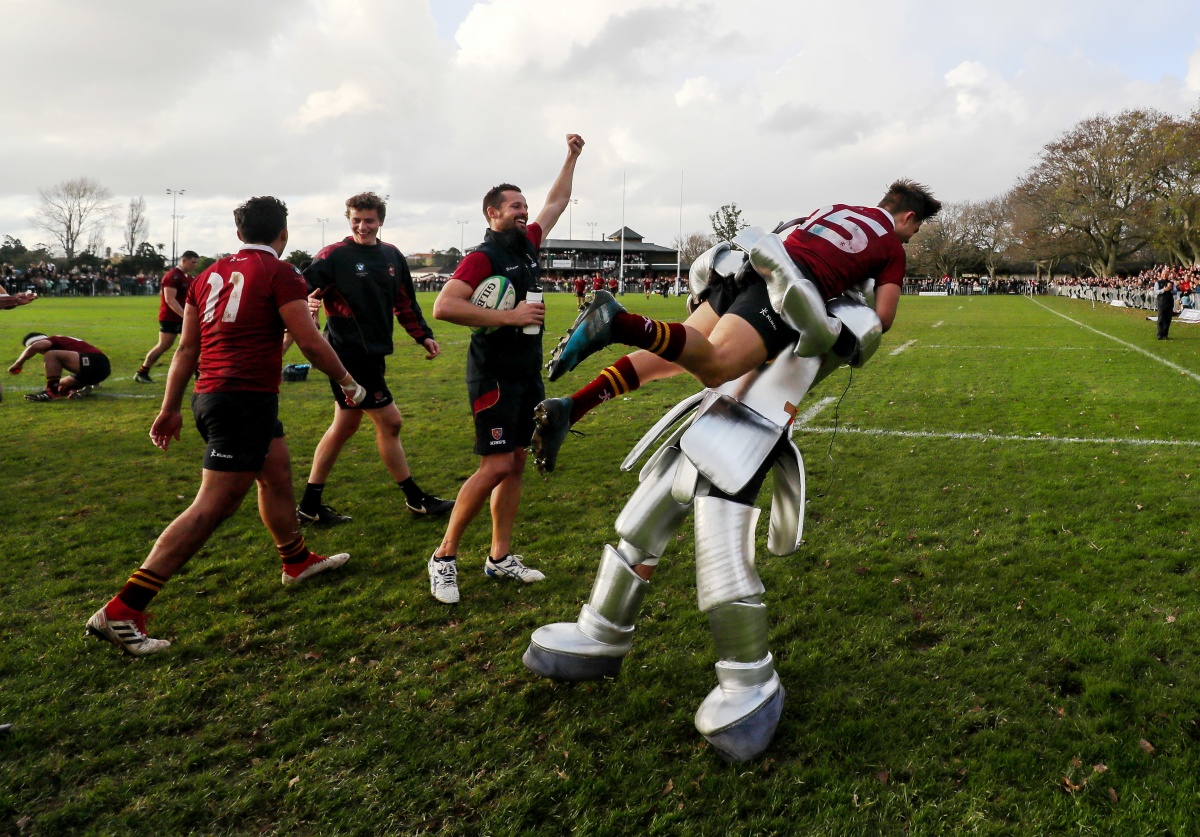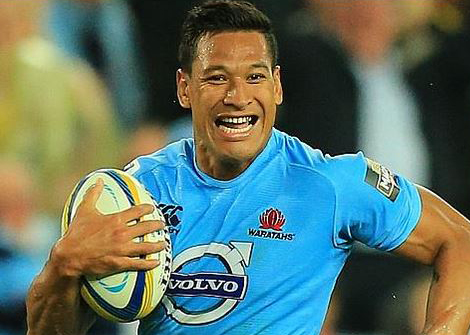- Rugby Toolbox
- Resources & Education
- Learn more
- Articles
- Snook on Coaching
- Encouraging Excitement
- Ruck & Run Drill
- Playing Philosophy – Ruck & Run Coaching Components
- Playing Philosophy – Spread the Forwards
- Playing Philosophy – A forward behind the ruck
- Playing Philosophy – Ruck & Run
- Playing Philosophy – An idea!
- The Breakdown
- Building Positivity [3]
- Building Positivity [2]
- Building Positivity
- Fitness and Game Related Activities
- Getting the Head Working
- Missiles are Dangerous
- Use of Video
- Winger Attacking Outside First-Five
- Player Profiling
- Selection
- Fitness Away from the Team Session
- Playing Philosophy (Pre season Prep)
- Coaching the Coaches
- The Rugby Coordinator and Pre-Season Preparation
- Why Not Use Tap Penalties More Often?
- Why Kick the Ball Down the Middle of the Field?
- Defending the 5 Metre Lineout Drive
- Scoring from the 5 Metre Lineout
- What are the Kicking Team Aiming to Achieve from Halfway Restart
- Should We Practice Scoring Tries?
- Team Culture
- Looking After Your Players
- Coach Survival Tips
- Under 11/13 – Backline Defence
- Under 11/13 – Ruck Defence
- Under 11/13 – Back Attack
- Under 13 – The Counter Attack
- Under 11/13 – The Maul
- Under 11/13 – Lineouts
- Under 11/13 – Decision Making
- Under 11/13 – Support Play
- Under 11/13 – Dive Pass and More
- Under 11/13 – Drop & Grubber Kick /Highball Catch
- Under 11/13 – Front on Tackling
- Under 11/13 – Contact – Getting Up – The Ruck
- Under 11/13 – The Coaching Session
- Under 8/10 – Using Space
- Under 8/10 – Kicking
- Under 8/10 – Contact and Picking Up the Ball
- U8/U10 Draw & Pass and Sidestep
- Under 8/10 – The Tackle
- Under 8/10 – The Coaching Session
- Under 7 – Test Your Coaching – Support Play
- Tap Pass and Swerve U7
- Ball Familiarisation; Passing & Receiving
- Activities for the Non-Contact Tackle
- Under 7 – The Coaching Session
- Coaching Teenagers – After the Ruck
- Coaching Teenagers – The Practice Session
- Coaching Teenagers – Best Practice
- Coaching Kids – Best Practice
- Plays from a Tap Penalty
- Running Plays from a 5 Man Lineout
- Driving Plays from a 5 Man Lineout
- Strike Plays at the End of the Lineout
- Back Strike Plays at the Lineout
- Wide Strike at the Scrum (2)
- Wide Strike at the Scrum
- Midfield Attack at the Scrum
- No 8 Plays at the Scrum (2)
- No 8 Plays at the Scrum
- The Cut Out Pass
- Skills to Penetrate (2)
- Skills to Penetrate
- Movements to Penetrate
- Patterns to Penetrate
- Contact and Continuity
- Keeping the Ball Alive Out Wide
- Pre Season Support Activities
- Checklist
- Understanding the game
- The Playing Philosophy
- The Lineout
- Overview
- Team Profile
- Start Now!
- Backrow
- Nine and Ten
- Rugby-related Fitness Activities
- The Psychological Edge
- Open Field Play
- Key Performance Indicators
- Improving Team Performance
- Backline Attack Concepts
- Tactics at Phase Play
- Playing Philosophy
- The ‘Stop Focus’
- Kick Attack
- Clearing the 22
- Wide Attack at Phase
- Player Focus
- Scrum Preparation
- Lineout Preparation
- Back Attack Preparation
- Sevens Preparation
- Sevens Kick Offs
- Sevens Scrum and Lineout
- Sevens Attack Patterns
- Sevens Defence
- 7's Selection and Game Planning
- Coaching and Leadership
- How the Game Evolves
- Changing Within the Game
- Learning from the Television.
- Using Tap Penalties Wisely
- Defence Drills
- Defence Drills for Tight Five
- Team Defence and TUB’ing
- Establishing Patterns from the Ruck
- Structured Phase Play
- Structuring Phase Play on the Run
- Coaching Roles
- Structuring a Close in Tackling/Defensive Session
- Coaching in Threes
- Attacking Back Play
- Kick Off Chase
- Wrap Around Back Plays
- Lineout Plans
- Looking and Learning
- Motivating Your Players
- Scrum Attack
- Refocusing the Team
- Monitoring the Progress
- Learning the Game
- Playing to the Laws
- Small is OK
- Decisions After the Tackle
- Improving Your Coaching
- Food for Thought
- More Food for Thought
- Passing & Catching
- How Ireland Nearly Beat the All Blacks
- The Progressive Coach
- Try Something New
- Encouraging Excitement
- The Mental Approach
- Where to Start
- Being the Best You Can Be
- Off the Ball Decisions
- Lineouts Difficult to Master
- Decisions on the Run
- Rucking and Rolling
- A Successful Approach
- Gaining Clarity
- Manipulation vs Physicality
- Beating the Drift
- To Ruck or Not to Ruck
- Stopping the Lineout Drive
- Fine Tuning the Planning
- It's a Running Game
- RugbySmart 2015
- Using the Shoulders
- Loosehead Prop / Tighthead Prop
- Position Specific – Hooker
- Position Specific – Lock
- Position Specific – Blindside Flanker
- Position Specific – Openside Flanker
- Position Specific – No 8
- Position Specific – Halfback
- Position Specific – First Five Eighth
- Position Specific – Second Five Eighth
- Position Specific – Centre Three-quarter
- Position Specific – Wing
- Position Specific – Fullback
Encouraging Excitement

Encouraging Excitement
Israel Falou has kicked off his Super Rugby campaign with the Waratahs by scoring five tries in two games. There is no question about it that Falou possesses a bag full of skills and physical presence with his size, speed, agility, balance, strength, catching, and passing. The list could go on.
There is no doubt also that he has always possessed these attributes, but now he can add game understanding and an even greater confidence in promoting himself within each match. These are two aspects that he would have had to learn coming into rugby and which would have required coaching input from his team mates and the different coaches he has been working under.
Although it is most unlikely that an Israel Falou is going to pop up in a club team there will be many players with some of these attributes and who only require encouragement and guidance from the coach for them to become excitement machines in their own environment.
The first requirement from a coach is providing the confidence for team members to run and pass the ball so that it becomes an integral part of their game plan. Once this occurs the players will soon realise what their roles are as support players and the types of skills required to maintain the continuity of play.

As an example Falou scored his second try as a support player from an attack that started with a quick tap penalty where the ball got turned over after a couple of rucks, and was then turned over again by the Waratahs. This had created a try scoring opportunity merely by the fact that both defences and attacks were disorganised. The quickest team to react was going to win this battle.
The ball was picked and passed under pressure two times before the halfback ran into a half gap and passed behind the tackler to a lock forward who had held his lateral position in the field and had wisely not headed back to the ruck area. This lock was in space and had a loose forward outside him with a scrambling defence heading across.
The lock ran forward and looked around so that he could make a good decision and as he is under threat he passes an inside ball to none other than a bursting Falou. Falou had recognised the opportunity quite a way back and had covered a lot of ground to get to this crucial spot. The try is his.
There were several lessons in this short sequence. Turnover ball is a huge opportunity to score, no matter where the starting position is on the field. Players need to hold their width and depth and head to positions where there appears to be the weakest defensive screen.
The ball needs to be moved away quickly from the point of contact so that it is away from the pressure zone as soon as possible. Following a couple of passes there needs to be a decision as to what is best. In this case it was the halfback threatening and getting a pass away as he is tackled.
The ball carrier then ran with his head up and looking around which means he could make a good choice of what to do. And of course, a long way back, Falou had looked up and made a decision as to where he was going to be the biggest threat and he ran in to that spot.
It’s all fairly obvious really. Well, it will be with the right encouragement and guidance. Look at video footage of your own games and pick out a couple of situations which could have been productive had different choices been made and players had worked harder to get themselves in to a threatening position.
Even without video footage, try to recall a moment in the game where it could have been different had players made better choices. Get them to explain these to you and what they could have done.
It will be important to play games or mini games at training and explain your thinking. Set up situations from games you have played or seen. Players will require proactive thinking and anticipation and the coach needs to provide the guidance. Most of all players need to be encouraged to turn up in threatening positions and not be stuck in a spot on the field determined by a number on their jersey.
Good luck.